This post may contain affiliate links.
Portokalopita is a traditional Greek orange cake with a unique texture and flavor that will instantly transport you to the sun-kissed shores of Greece. The combination of flaky phyllo dough, vibrant orange zest, and a sweet syrup soaked into the cake makes for a moist, flavorful dessert that’s perfect for any occasion.

Syrup-soaked desserts are so popular and loved in the Middle East and parts of the Mediterranean. Some of our favorites are revani, cake sharbati (saffron syrup cake) and kunafa. Whether you’re craving a taste of Greece or looking for a unique dessert to wow your guests, this easy-to-make Greek orange cake is just what you need!
Table of Contents
Recipe Highlights: Portokalopita
Cultural Influence: Greek
Primary Cooking Technique: Baking
Dominant Flavor Profile: Citrusy with a warm cinnamon flavor

About Portokalopita
Portokalopita (pronounced “por-to-ka-lo-pee-ta”) is a beloved Greek dessert that has been passed down through generations. The name “Portokalopita” comes from the Greek words “portokali,” meaning orange, and “pita,” meaning pie or cake.
The cake combines simple ingredients—phyllo dough, Greek yogurt, oranges, and syrup—reflecting the traditional flavors of Greek cuisine, where citrus fruits abound and syrup sweetens many desserts. In Greece, people often enjoy this dessert during festive occasions, family gatherings, or as an afternoon treat with coffee or tea.
Ingredients
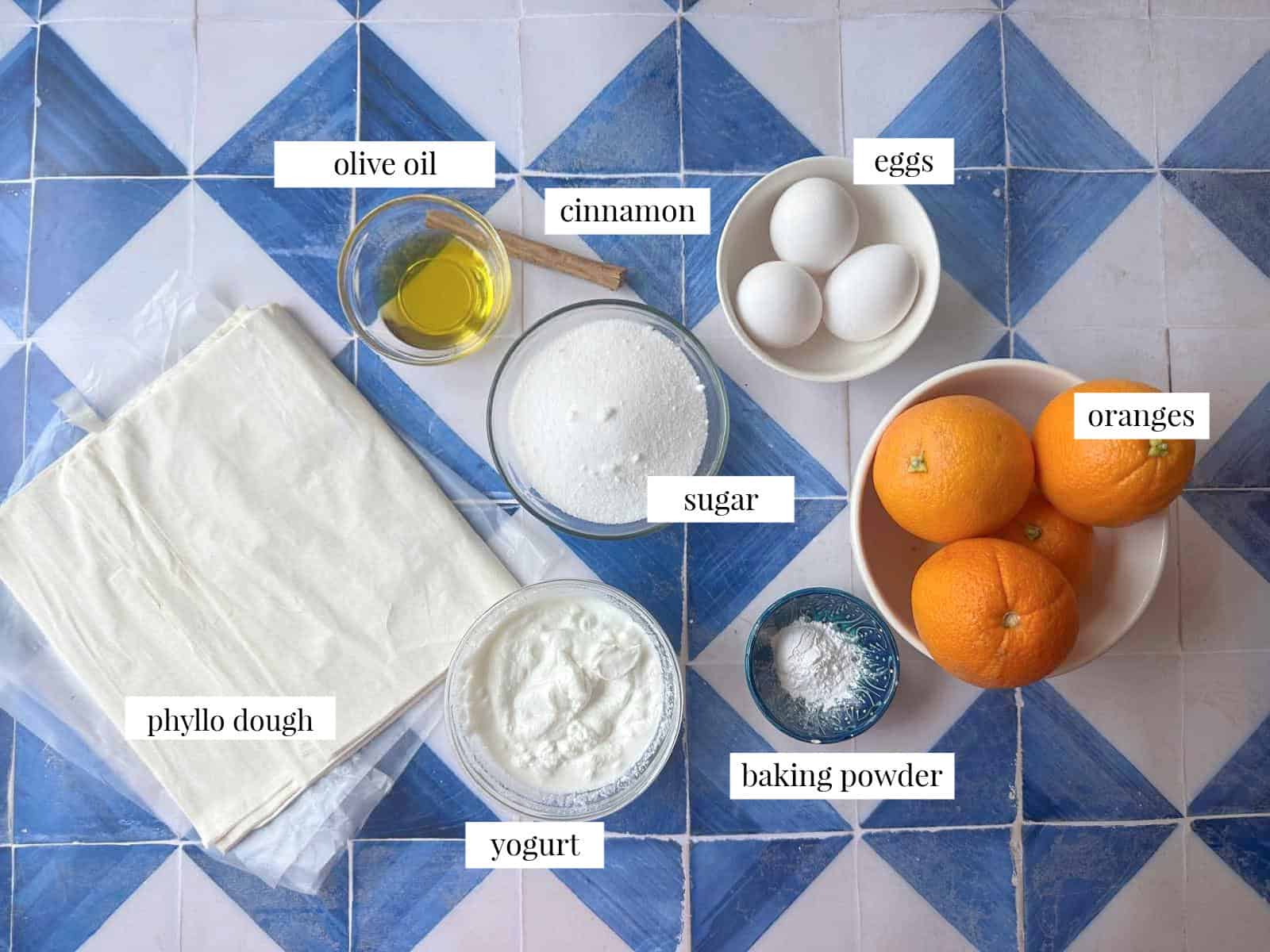
- Phyllo Dough: Forms the base of the cake, giving it a unique, layered, and slightly crispy texture.
- Eggs (room temperature): Helps bind the ingredients together and contributes to the cake’s structure and richness.
- Orange Zest: Infuses the cake with fresh citrus aroma and enhances the orange flavor.
- Sugar: Adds sweetness to both the cake and the syrup, balancing the tartness of the orange juice.
- Olive Oil: Keeps the cake moist and adds a subtle richness, while also contributing to the Mediterranean touch.
- Orange Juice: Provides moisture and a bright, tangy flavor, enhancing the citrusy profile of the cake.
- Greek Yogurt: Adds moisture, a slight tanginess, and richness to the cake, making it creamy and tender.
- Baking Powder: A leavening agent that helps the cake rise and gives it a light, airy texture
- .Baking Soda: Works alongside the yogurt to provide additional leavening and tenderness to the cake.
- Salt: Enhances the flavors and balances the sweetness.
- For the syrup:
- Sugar: Sweetens the syrup that will soak into the cake, adding moisture and flavor.
- Water: Helps dissolve the sugar and acts as a base for the syrup.
- Freshly Squeezed Orange Juice: Gives the syrup its vibrant citrus flavor and moistens the cake.
- Orange Zest: Adds an extra burst of fresh citrus flavor to the syrup.
- Cinnamon Stick: Infuses a warm, spiced note into the syrup, complementing the citrus flavors.
How To Make Greek Orange Cake
Step 1: Make the Syrup
Combine the sugar water, orange juice, orange zest, and cinnamon stick in a pot. Now, bring to a boil, then lower the heat and simmer for about 15 minutes. Finally, set aside to cool completely.

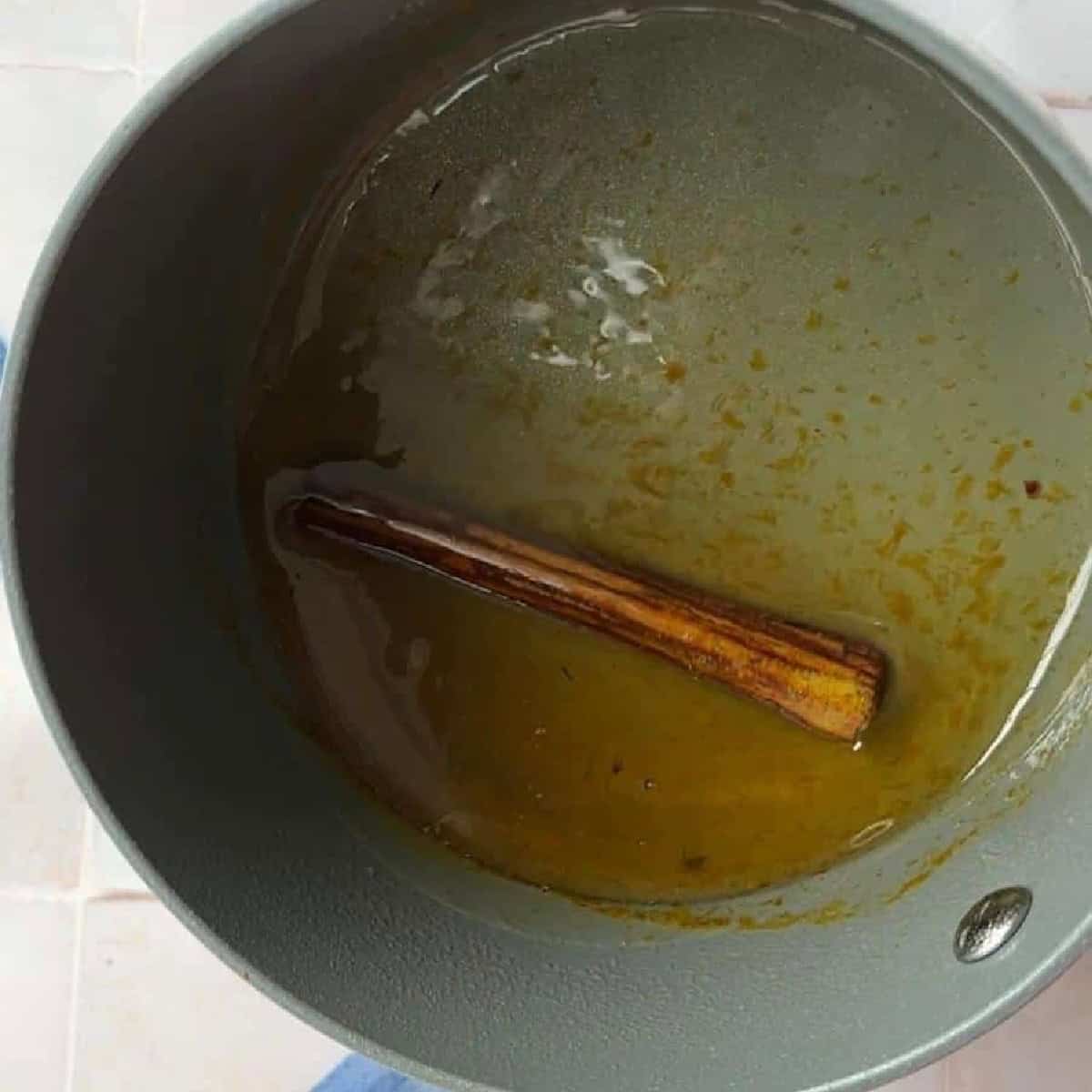
Step 2: Dry the Phyllo Dough
Preheat the oven to 220°F (105°C). Scrunch up the phyllo dough into loose bundles and place them on a baking sheet.
Next, bake for 30 minutes until the dough is dry and crispy. You might need to flip the crunch up phyllo sheets to dry on both sides.
After, let it cool completely, then crumble it finely with your hands.

Step 3: Prepare the Cake Batter
First, preheat the oven to 350°F (175°C) and line a springform pan with parchment paper.
Then, in a bowl, mix the eggs, orange zest, and sugar until light and frothy.
After that, add the olive oil and orange juice, then mix in the Greek yogurt, baking powder, baking soda, and salt until fully combined.
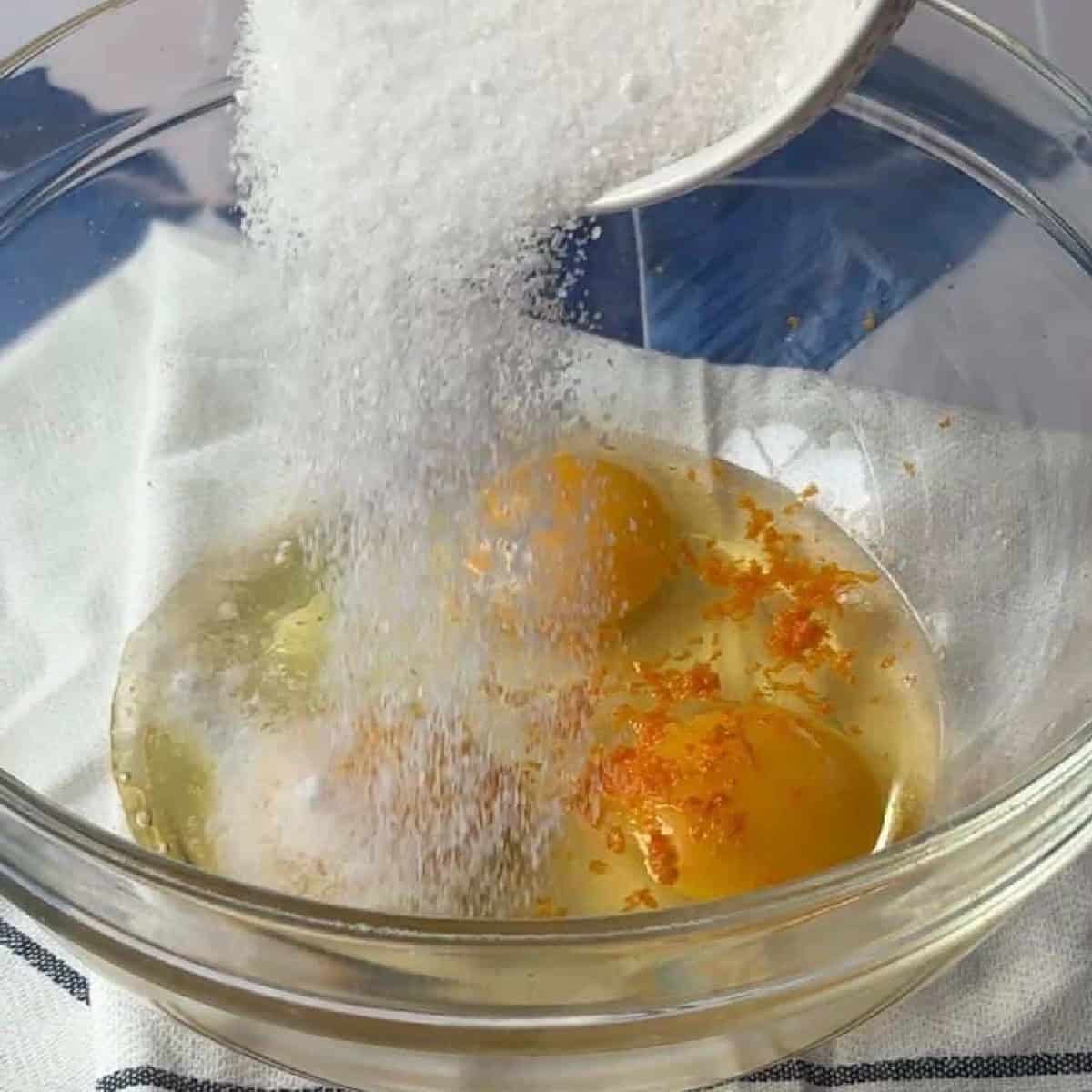
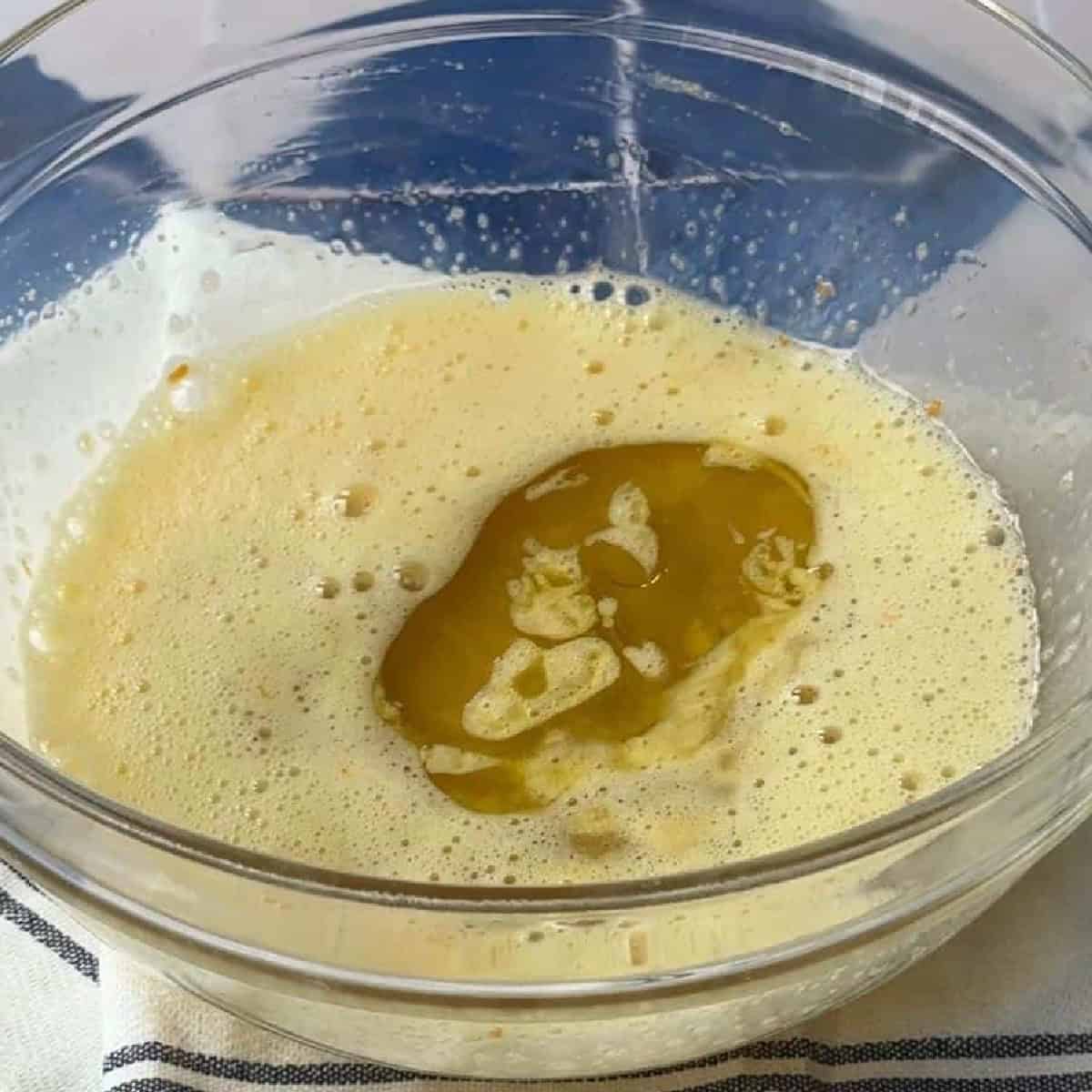
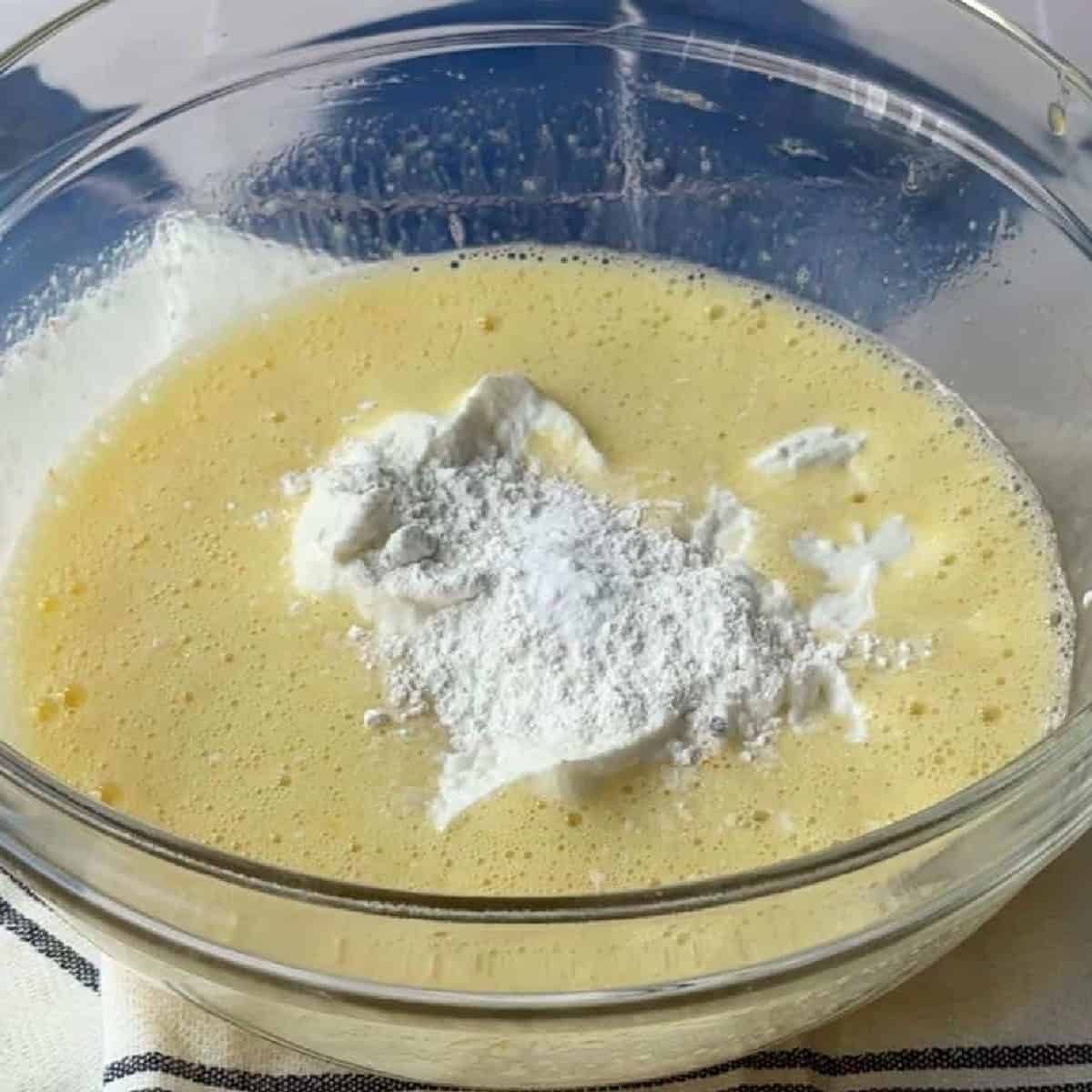
Step 4: Incorporate the Phyllo and Bake
Start by gradually folding the crumbled phyllo dough into the wet mixture in two rounds, and use a spatula to stir until you evenly distribute the dough.
Next, you want to transfer the mixture to the prepared springform pan and bake for 40 minutes, or until the top is golden and a toothpick inserted comes out clean.
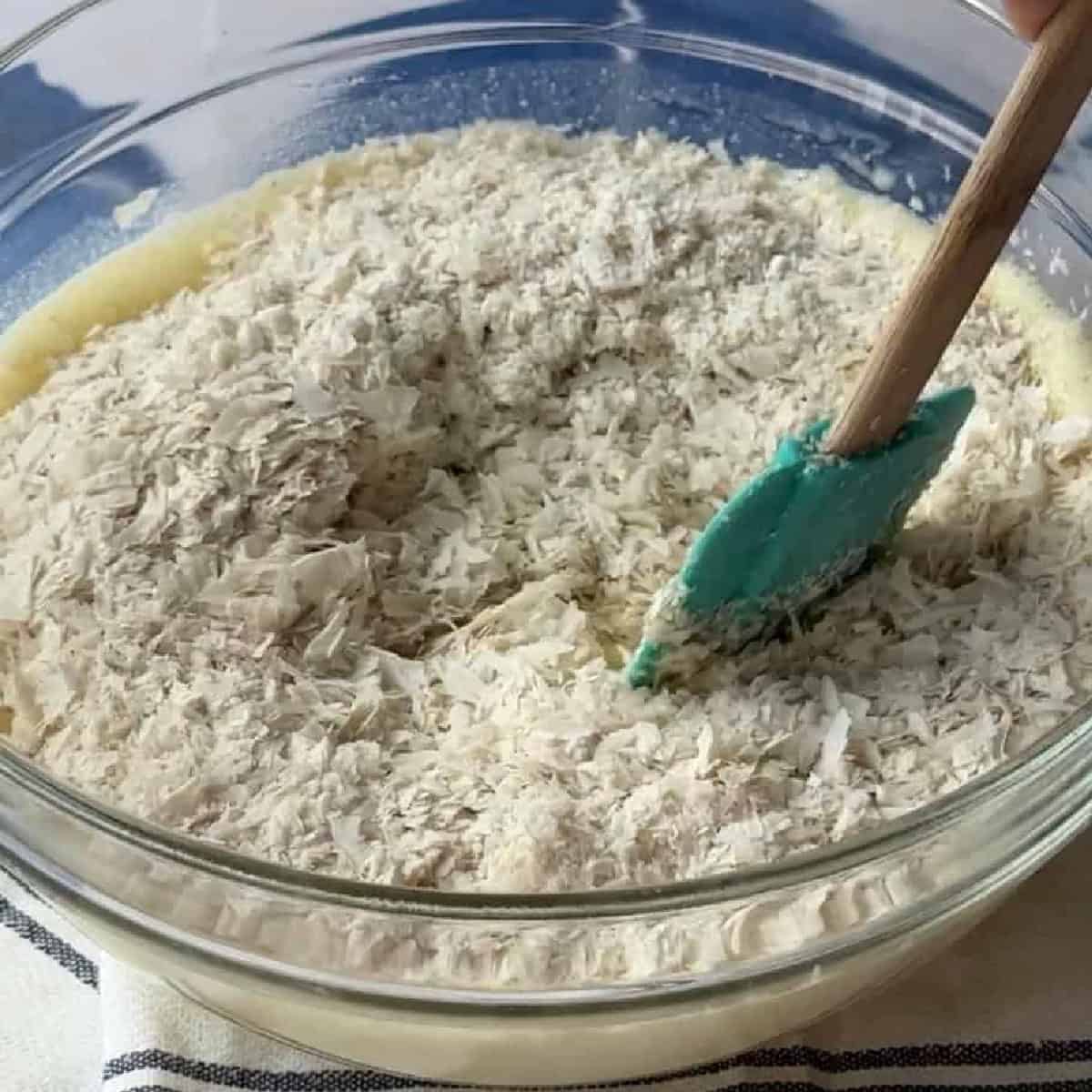

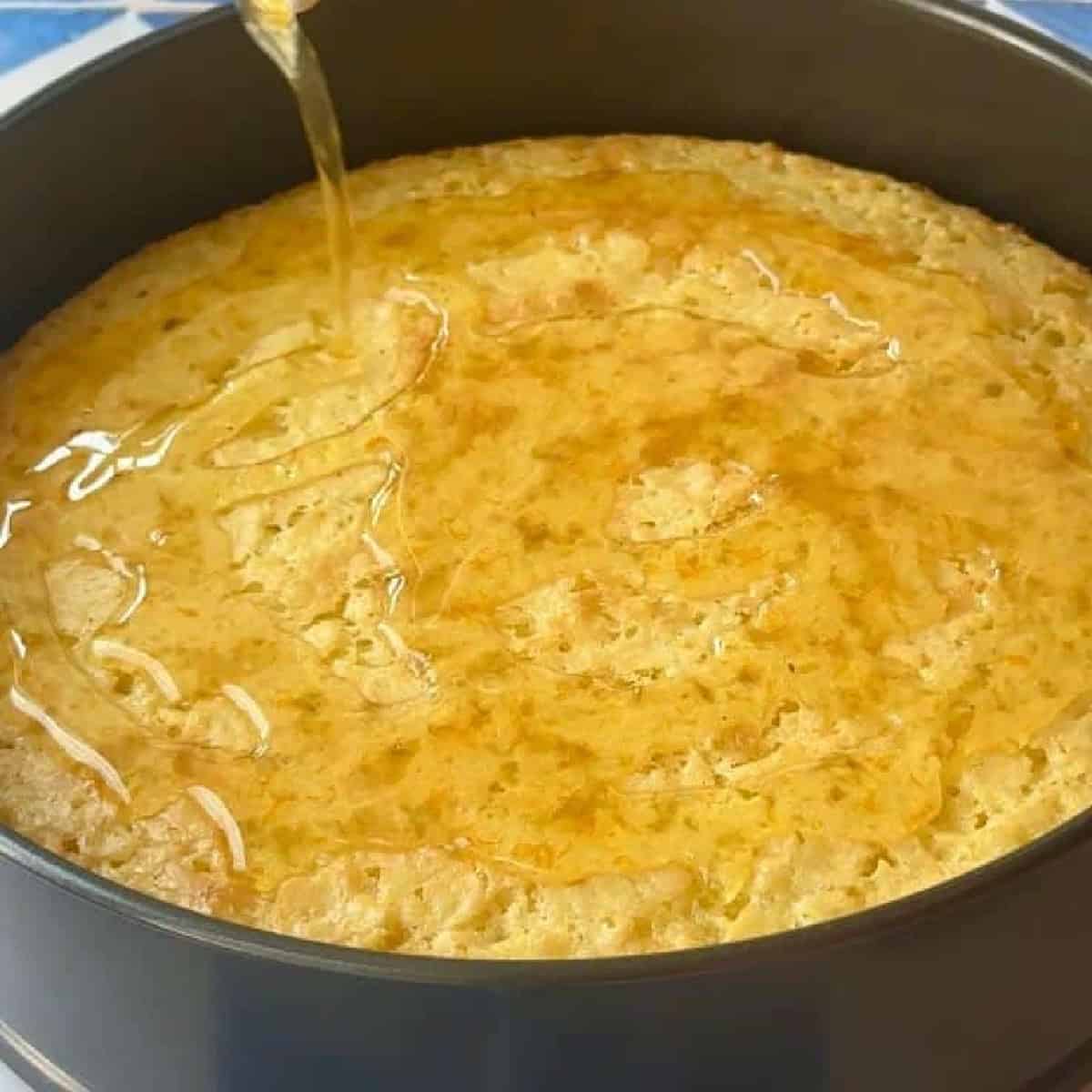
Step 5: Add the Syrup
Once the cake is baked, poke holes all over it with a toothpick. Now, slowly ladle the cold syrup over the hot cake, allowing it to soak in. Let the cake sit for at least two hours before serving.

Recipe Tips
Make-Ahead Tip: You can make the syrup ahead of time and store it in the fridge until needed.
Texture Tip: : Thoroughly dry the phyllo dough before crumbling it into the batter to give Portokalopita its signature texture.
Syrup Soak: For best results, always pour cold syrup over a hot cake. This allows the cake to absorb the syrup without becoming soggy.
Cutting the Cake: To ensure clean cuts and a fully soaked dessert, wait until the syrup fully absorbs before slicing the cake.
Serving Suggestions
Portokalopita is traditionally served chilled or at room temperature. It pairs beautifully with:
Greek Coffee: A strong, slightly bitter Greek coffee balances the sweetness of the cake.
Vanilla Ice Cream: Serve slices with a scoop of vanilla ice cream for a rich and my contrast to the citrus flavor.
Whipped Cream: A dollop of lightly sweetened whipped cream adds a lovely lightness to the dense, syrup-soaked cake.

How To Store Portokalopita
Room Temperature: Portokalopita can be stored at room temperature, preferably in an airtight container, for up to 3 days.
Refrigeration: For a longer shelf life, place the cake in an airtight container and refrigerate for up to 5 days. It tastes great when chilled!
Freezing: You can freeze Portokalopita for up to 3 months. Wrap individual slices in plastic wrap and store in an airtight container. Thaw at room temperature before serving.
Frequently Asked Questions
Portokalopita is made with phyllo dough, eggs, orange juice, Greek yogurt, olive oil, and is soaked in a sweet orange syrup.
While it can be stored at room temperature for a couple of days, Portokalopita keeps better when refrigerated, especially if you live in a warm climate.
Absolutely! Store-bought phyllo dough works perfectly in this recipe. Just make sure to dry it out before adding it to the cake mixture.
To avoid sogginess, make sure the syrup is completely cooled before pouring it over the hot cake. This helps the cake absorb the syrup gradually without becoming overly wet.
More Mediterranean Dessert Recipes
Did you make this recipe? I’d love to hear about it! Please comment and leave a 5-star🌟 rating below. You can also follow us on Instagram, Facebook, Pinterest or subscribe to our newsletter to get a free e-Cookbook!

Portokalopita (Greek Orange Phyllo Cake)
Ingredients
Syrup
- 1 cup granulated sugar
- 1 cup water
- ½ cup freshly squeezed orange juice
- Zest of an orange
- 1 cinnamon stick
Cake
- 250 gr Phyllo dough
- 3 eggs, room temperature
- Zest of an orange
- ½ cup sugar
- ½ cup olive oil
- ⅓ cup freshly squeezed orange juice
- ¾ cup Greek yogurt
- 2 tsp baking powder
- ½ tsp baking soda
- ¼ tsp kosher salt
Instructions
To make the syrup:
- Combine the sugar, water, orange juice, orange zest, and cinnamon stick in a pot.
- Bring to a boil, then lower the heat and simmer for about 15 minutes. Set aside to cool completely.
To make the cake:
- Preheat the oven to 220°F (105°C). Scrunch up the phyllo dough into loose bundles and place them on a baking sheet.
- Bake for 30 minutes until the dough is dry and crispy. You might need to flip the crunch up phyllo sheets halfway through to dry on both sides.
- Let it cool completely, then crumble very finely it with your hands.
- Preheat the oven to 350°F (175°C) and line a 9-inch springform pan or square pan with parchment paper.
- In a bowl, mix the eggs, orange zest, and sugar until light and frothy.
- Add the olive oil and orange juice, then mix in the Greek yogurt, baking powder, baking soda, and salt until fully combined.
- Gradually fold the crumbled phyllo dough into the wet mixture in two rounds, stirring with a spatula until everything is well combined.
- Transfer the mixture to the prepared springform pan and bake for 40 minutes, or until the top is golden and a toothpick inserted comes out clean.
- Once the cake is baked, poke holes all over it with a toothpick. Slowly ladle the cold syrup over the hot cake. Let the cake sit for at least two hours before serving.
Video
Notes
- This cake is not made with flour, and it cannot be made gluten-free because the texture depends on the use of phyllo dough.
- Always use fresh oranges to get the best flavor. The combination of orange zest and juice is key to its bright, citrusy taste.
- You can prepare the syrup ahead of time and store it until ready to use.
- The orange zest helps prevent crystallization of the syrup, so don’t skip it.
Nutrition
Nutrition information is automatically calculated, so should only be used as an approximation.
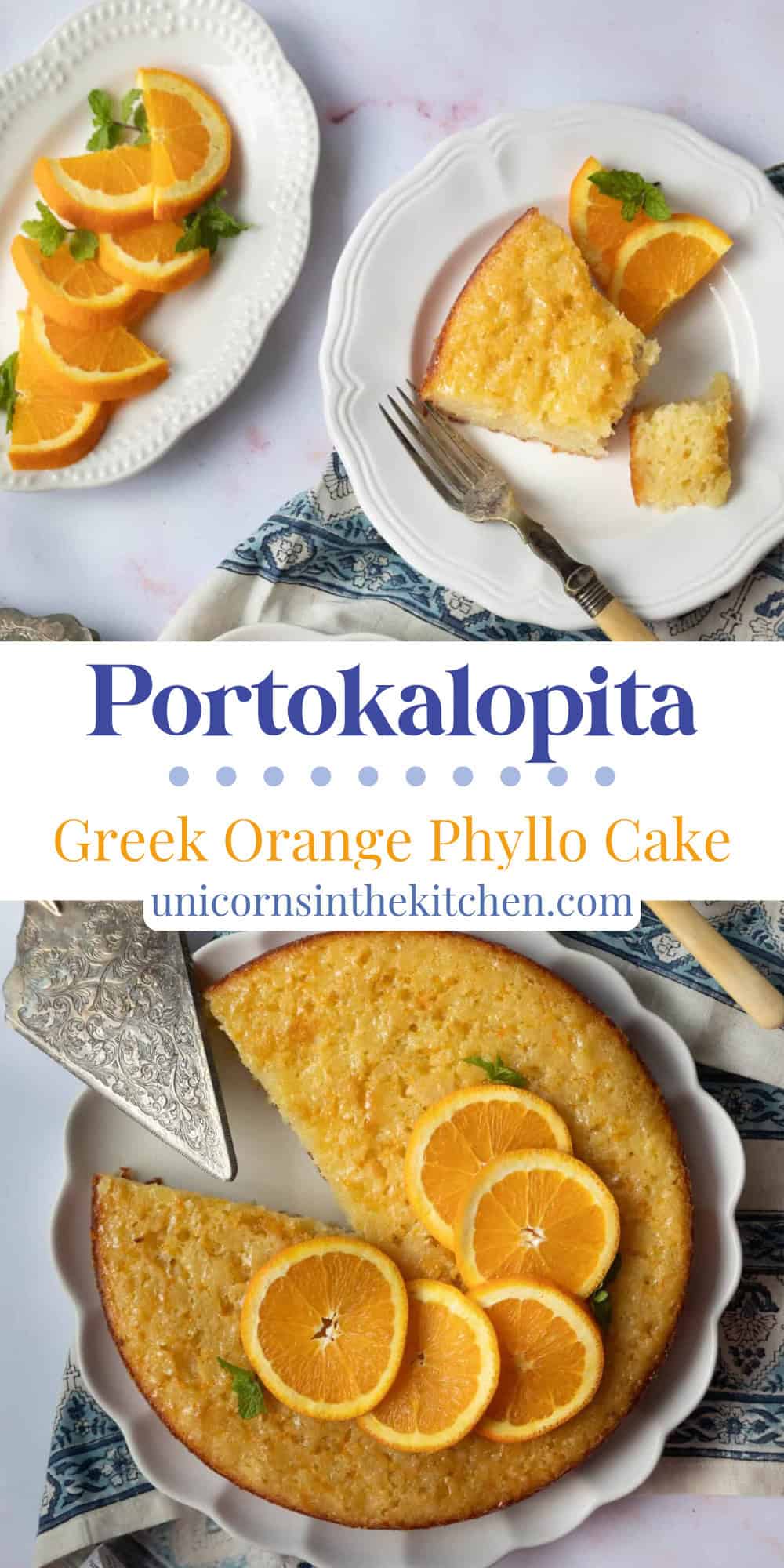




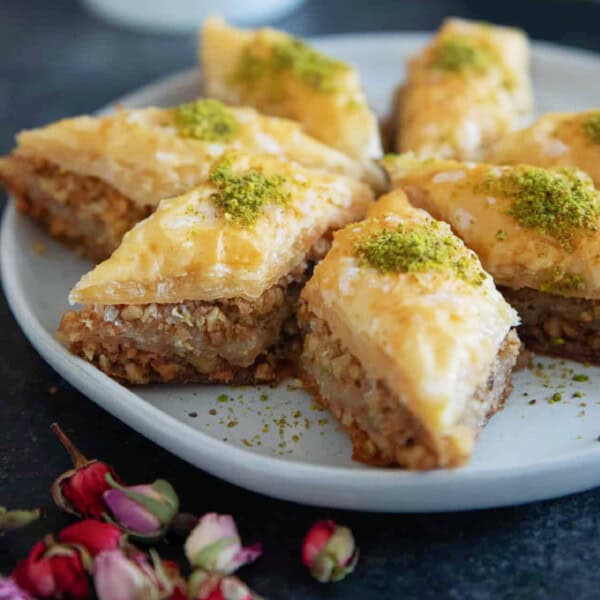









Looks awesome.
I really don’t like the taste of olive oil.
Can I use any other oil?
Yes you can use any neutral flavored oil.